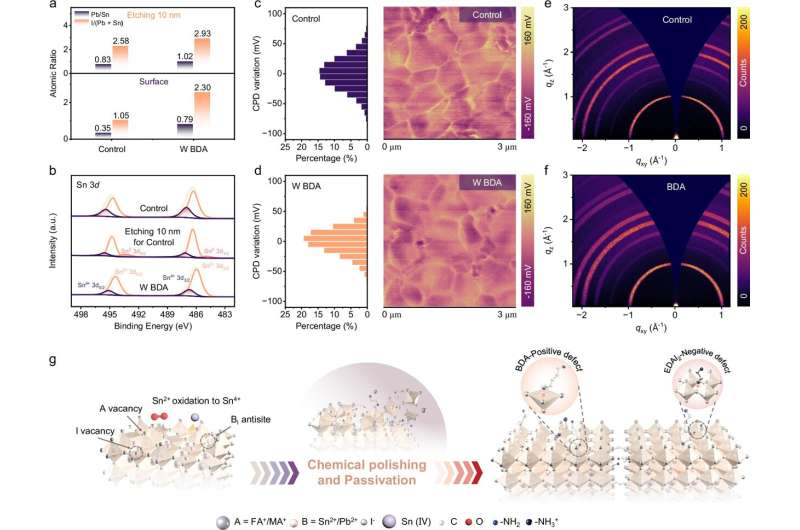Researchers create all-perovskite tandem solar cell with record efficiency
A team of engineers at Huazhong University of Science and Technology in China has designed, built and independently tested an all-perovskite tandem solar cell with record efficiency. Their paper is published in the journal Nature Communications.
Perovskite tandem solar cells combine two materials to capture a broader spectrum of sunlight, thereby increasing efficiency. They are typically made by pairing a perovskite top with a bottom cell made of another material, such as silicon or a different variant of perovskite.
Perovskite is a mineral made mostly of calcium titanate. Solar cell makers have been testing the use of perovskite as a replacement for silicon because it is less expensive, more efficient and easier to make and because it allows for solar cells in uneven or even bendable configurations.
Use of perovskite in commercial applications has been limited, however, by difficulties in producing panel surfaces free from defects, which cause loss of non-radiative energy, reducing efficiency of the cell. In this new effort, the research team has found a way to create cells using the material with far fewer defects, resulting in record efficiency.
The work involved developing a surface reconstruction technique that reduces surface defects within the perovskite top cell. The technique uses BDA and EDAI2 to allow for modifying (polishing) the surface of the cell.
The team was able to establish a Sn–Pb mixed perovskite film with fewer defects than those made with other techniques or materials. That allowed for improvements in charge carrier transport and reductions in losses of energy at the transport layer.
To test their new technique, the researchers created and polished a top cell, which served as the light-absorbing layer. They then placed it over an electron transfer layer made from C60, with a hole transport layer made of PEDOT:PSS. They then added gold contacts.
Testing showed the cell had a power conversion efficiency of 28.49%, which was independently verified. They also note that the cell demonstrated durability, continuing to perform optimally after 550 hours of continuous operation.
More information:
Yongyan Pan et al, Surface chemical polishing and passivation minimize non-radiative recombination for all-perovskite tandem solar cells, Nature Communications (2024). DOI: 10.1038/s41467-024-51703-0
© 2024 Science X Network
Citation:
Researchers create all-perovskite tandem solar cell with record efficiency (2024, September 2)
retrieved 2 September 2024
from https://techxplore.com/news/2024-09-perovskite-tandem-solar-cell-efficiency.html
This document is subject to copyright. Apart from any fair dealing for the purpose of private study or research, no
part may be reproduced without the written permission. The content is provided for information purposes only.

Comments are closed